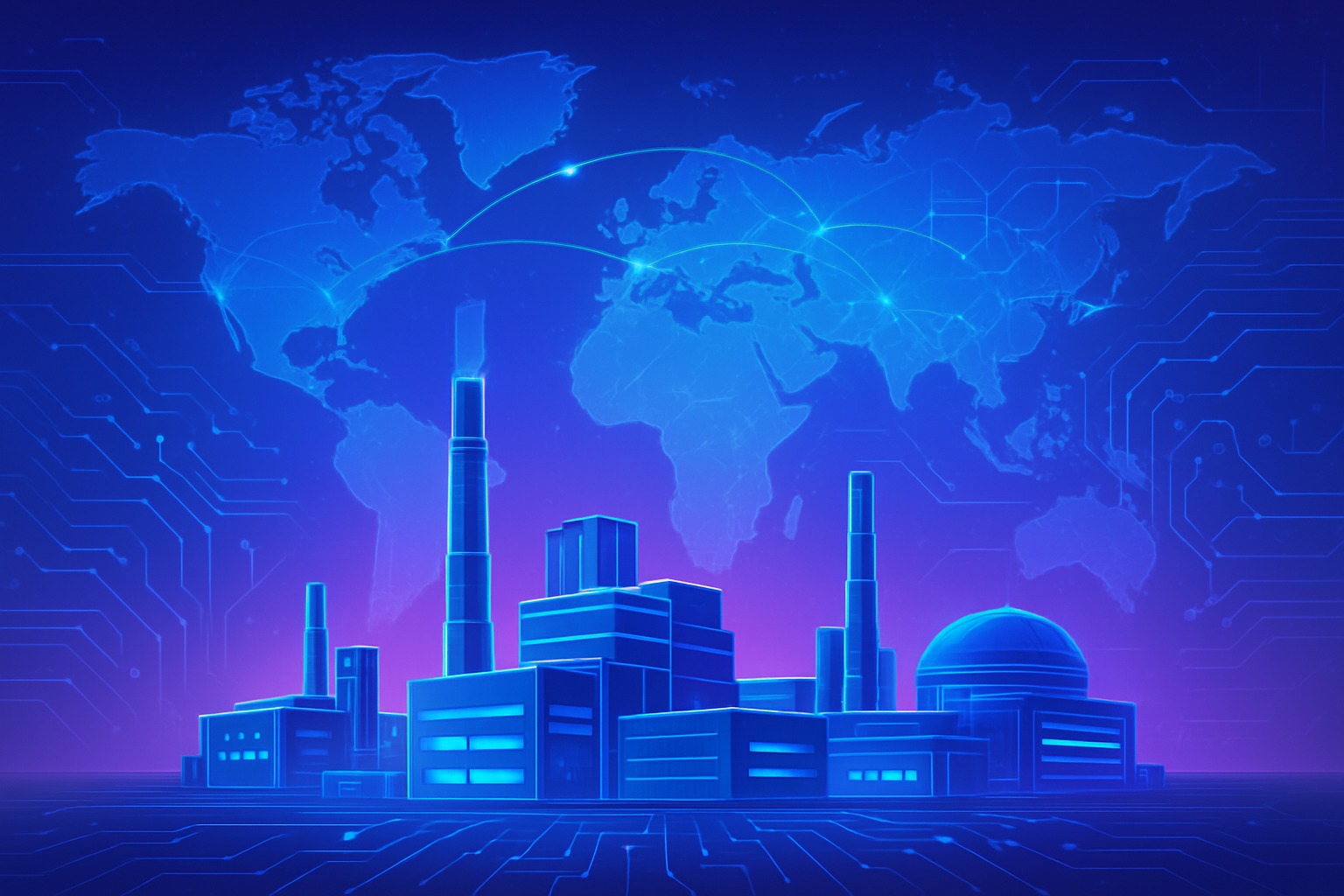Taiwan Semiconductor Manufacturing Company (NYSE: TSM), the undisputed titan of the global semiconductor foundry industry, is experiencing an unprecedented surge in investment and investor confidence as of November 2025. Driven by an insatiable demand for cutting-edge chips powering the artificial intelligence revolution, TSMC is aggressively expanding its manufacturing footprint and technological capabilities worldwide, solidifying its indispensable role in the digital economy. This wave of capital expenditure and robust financial performance underscores the company's critical importance in shaping the future of technology.
The immediate significance of TSMC's current trajectory cannot be overstated. With projected capital expenditures for 2025 ranging between $38 billion and $42 billion, the company is making a clear statement of intent: to maintain its technological leadership and meet the escalating global demand for advanced semiconductors. This substantial investment is primarily directed towards advanced process development, ensuring TSMC remains at the forefront of chip manufacturing, a position that is increasingly vital for tech giants and innovative startups alike.
Engineering the Future: TSMC's Technological Edge and Strategic Investments
TSMC's strategic investment initiatives are meticulously designed to reinforce its technological dominance and cater to the evolving needs of the high-performance computing (HPC) and AI sectors. Approximately 70% of its massive capital expenditure is funneled into advanced process development, with a significant portion dedicated to bringing 2-nanometer (nm) technology to mass production. The company anticipates commencing mass production of 2nm chips in the second half of 2025, with an ambitious target of reaching a monthly production capacity of up to 90,000 wafers by late 2026. This technological leap promises a 25-30% improvement in energy efficiency, a critical factor for power-hungry AI applications, and is expected to further boost TSMC's margins and secure long-term contracts.
Beyond process node advancements, TSMC is also aggressively scaling its advanced packaging capabilities, recognizing their crucial role in integrating complex AI and HPC chips. Its Chip-on-Wafer-on-Substrate (CoWoS) capacity is projected to expand by over 80% from 2022 to 2026, while its System-on-Integrated-Chip (SoIC) capacity is expected to grow at a compound annual growth rate (CAGR) exceeding 100% during the same period. These packaging innovations are vital for overcoming the physical limitations of traditional chip design, allowing for denser, more powerful, and more efficient integration of components—a key differentiator from previous approaches and a necessity for the next generation of AI hardware.
The company's global footprint expansion is equally ambitious. In Taiwan, seven new facilities are slated for 2025, including 2nm production bases in Hsinchu and Kaohsiung, and advanced packaging facilities across Tainan, Taichung, and Chiayi. Internationally, TSMC is dramatically increasing its investment in the United States to a staggering total of US$165 billion, establishing three new fabrication plants, two advanced packaging facilities, and a major R&D center in Phoenix, Arizona. Construction of its second Kumamoto fab in Japan is set to begin in Q1 2025, with mass production targeted for 2027, and progress continues on a new fab in Dresden, Germany. These expansions demonstrate a commitment to diversify its manufacturing base while maintaining its technological lead, a strategy that sets it apart from competitors who often struggle to match the scale and complexity of TSMC's advanced manufacturing.
The AI Engine: How TSMC's Dominance Shapes the Tech Landscape
TSMC's unparalleled manufacturing capabilities are not just a technical marvel; they are the bedrock upon which the entire AI industry is built, profoundly impacting tech giants, AI companies, and startups alike. Companies like Apple (NASDAQ: AAPL), NVIDIA (NASDAQ: NVDA), Advanced Micro Devices (NASDAQ: AMD), Broadcom (NASDAQ: AVGO), and Qualcomm (NASDAQ: QCOM) are heavily reliant on TSMC for the production of their most advanced semiconductors. This dependence means that TSMC's technological advancements and production capacity directly dictate the pace of innovation and product launches for these industry leaders.
For major AI labs and tech companies, TSMC's leading-edge process technologies are critical enablers. The company's 3nm chips currently power Apple's latest devices, and its upcoming 2nm technology is expected to be crucial for the next generation of AI accelerators and high-performance processors. This ensures that companies at the forefront of AI development have access to the most power-efficient and high-performing chips, giving them a competitive edge. Without TSMC's capabilities, the rapid advancements seen in areas like large language models, autonomous systems, and advanced graphics processing would be significantly hampered.
The competitive implications are clear: companies with strong partnerships and allocation at TSMC stand to benefit immensely. This creates a strategic advantage for those who can secure manufacturing slots for their innovative chip designs. Conversely, any disruption or bottleneck at TSMC could have cascading effects across the entire tech ecosystem, impacting product availability, development timelines, and market positioning. TSMC's consistent delivery and technological leadership minimize such risks, providing a stable and advanced manufacturing partner that is essential for the sustained growth of the AI and tech sectors.
Global Geopolitics and the Silicon Backbone: Wider Significance of TSMC
TSMC's role extends far beyond merely manufacturing chips; it is a linchpin of global technology, intertwining with geopolitical stability, economic prosperity, and the broader trajectory of technological advancement. The company's unchallenged market leadership, commanding an estimated 70% of the global chip manufacturing market and over 55% of the foundry sector in 2024, makes it a critical component of international supply chains. This technological indispensability means that major world economies and their leading tech firms are deeply invested in TSMC's success and stability.
The company's extensive investments and global expansion efforts, particularly in the United States, Japan, and Europe, are not just about increasing capacity; they are strategic moves to de-risk supply chains and foster localized semiconductor ecosystems. The expanded investment in the U.S. alone is projected to create 40,000 construction jobs and tens of thousands of high-paying, high-tech manufacturing and R&D positions, driving over $200 billion of indirect economic output. This demonstrates the profound economic ripple effect of TSMC's operations and its significant contribution to global employment and innovation.
Concerns about geopolitical tensions, particularly in the Taiwan Strait, inevitably cast a shadow over TSMC's valuation. However, the global reliance on its manufacturing capabilities acts as a mitigating factor, making its stability a shared international interest. The company's consistent innovation, as recognized by the Robert N. Noyce Award presented to its Chairman C.C. Wei and former Chairman Mark Liu in November 2025, underscores its profound contributions to the semiconductor industry, comparable to previous milestones that defined eras of computing. TSMC's advancements are not just incremental; they are foundational, enabling the current AI boom and setting the stage for future technological breakthroughs.
The Road Ahead: Future Developments and Enduring Challenges
Looking ahead, TSMC's trajectory is marked by continued aggressive expansion and relentless pursuit of next-generation technologies. The company's commitment to mass production of 2nm chips by the second half of 2025 and its ongoing research into even more advanced nodes signal a clear path towards sustained technological leadership. The planned construction of additional 2nm factories in Taiwan and the significant investments in advanced packaging facilities like CoWoS and SoIC are expected to further solidify its position as the go-to foundry for the most demanding AI and HPC applications.
Potential applications and use cases on the horizon are vast, ranging from more powerful and efficient AI accelerators for data centers to advanced chips for autonomous vehicles, augmented reality devices, and ubiquitous IoT. Experts predict that TSMC's innovations will continue to push the boundaries of what's possible in computing, enabling new forms of intelligence and connectivity. The company's focus on energy efficiency in its next-generation processes is particularly crucial as AI workloads become increasingly resource-intensive, addressing a key challenge for sustainable technological growth.
However, challenges remain. The immense capital expenditure required to stay ahead in the semiconductor race necessitates sustained profitability and access to talent. Geopolitical risks, while mitigated by global reliance, will continue to be a factor. Competition, though currently lagging in advanced nodes, could intensify in the long term. What experts predict will happen next is a continued arms race in semiconductor technology, with TSMC leading the charge, but also a growing emphasis on resilient supply chains and diversified manufacturing locations to mitigate global risks. The company's strategic global expansion is a direct response to these challenges, aiming to build a more robust and distributed manufacturing network.
A Cornerstone of the AI Era: Wrapping Up TSMC's Impact
In summary, TSMC's current investment trends and investor interest reflect its pivotal and increasingly indispensable role in the global technology landscape. Key takeaways include its massive capital expenditures directed towards advanced process nodes like 2nm and sophisticated packaging technologies, overwhelmingly positive investor sentiment fueled by robust financial performance and its critical role in the AI boom, and its strategic global expansion to meet demand and mitigate risks. The company's recent 17% increase in its quarterly dividend further signals confidence in its sustained growth and profitability.
This development's significance in AI history is profound. TSMC is not just a manufacturer; it is the silent enabler of the AI revolution, providing the foundational hardware that powers everything from sophisticated algorithms to complex neural networks. Without its continuous innovation and manufacturing prowess, the rapid advancements in AI that we witness today would be severely constrained. Its technological leadership and market dominance make it a cornerstone of the modern digital age.
Final thoughts on the long-term impact point to TSMC remaining a critical barometer for the health and direction of the tech industry. Its ability to navigate geopolitical complexities, maintain its technological edge, and continue its aggressive expansion will largely determine the pace of innovation for decades to come. What to watch for in the coming weeks and months includes further updates on its 2nm production ramp-up, progress on its global fab constructions, and any shifts in its capital expenditure guidance, all of which will provide further insights into the future of advanced semiconductor manufacturing and, by extension, the future of AI.
This content is intended for informational purposes only and represents analysis of current AI developments.
TokenRing AI delivers enterprise-grade solutions for multi-agent AI workflow orchestration, AI-powered development tools, and seamless remote collaboration platforms.
For more information, visit https://www.tokenring.ai/.









